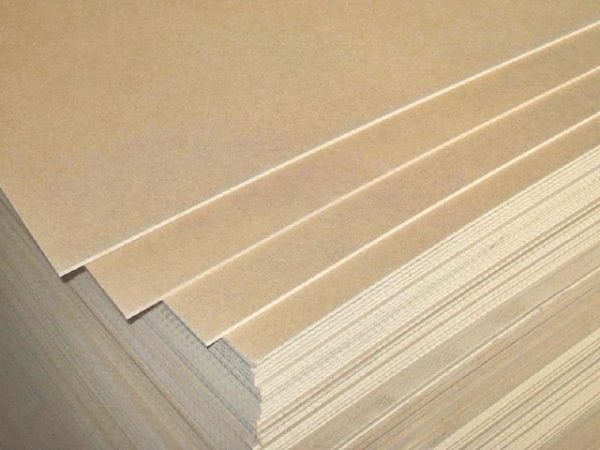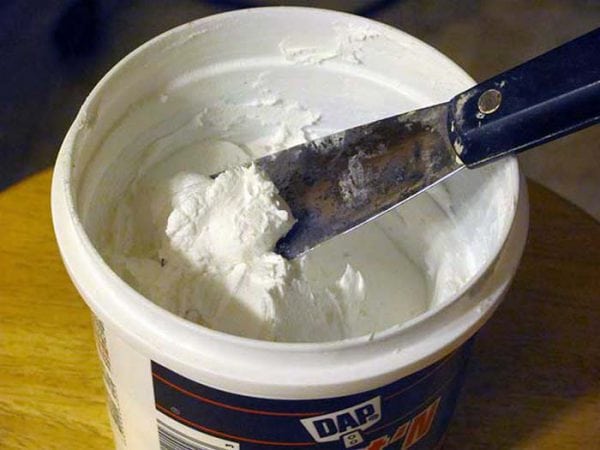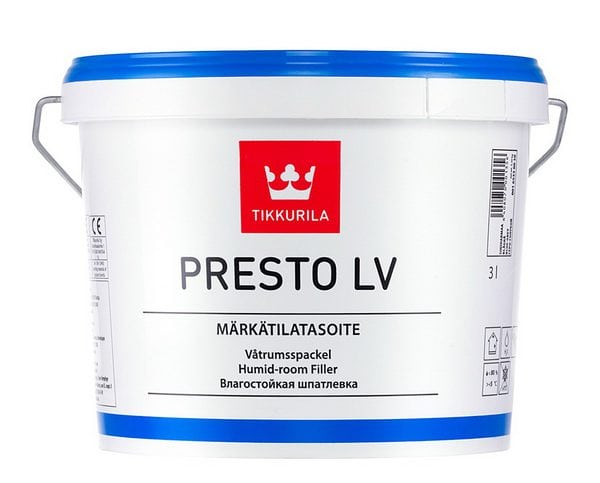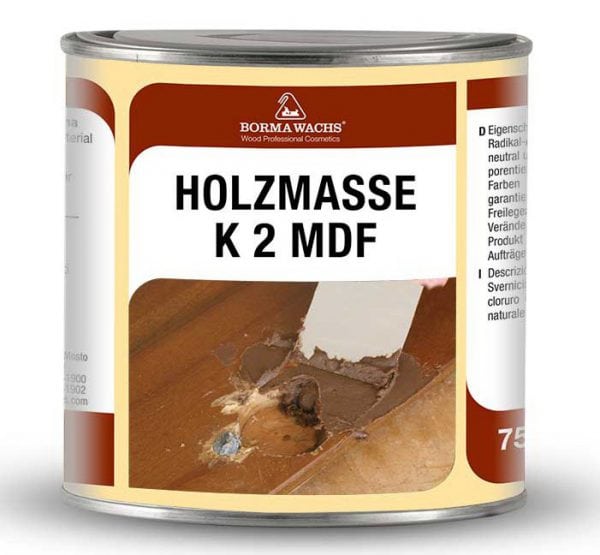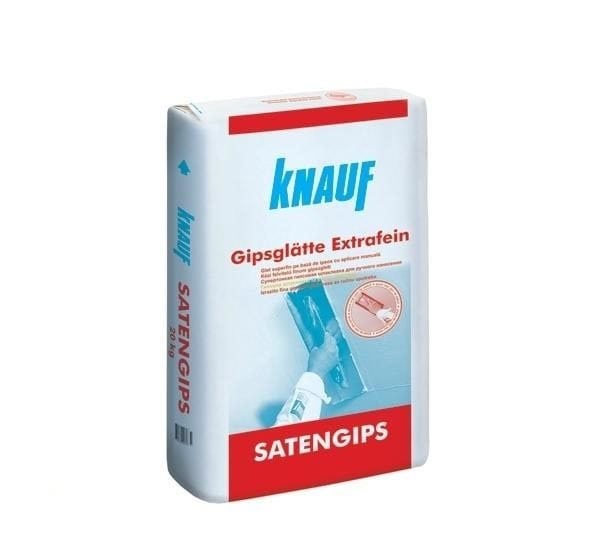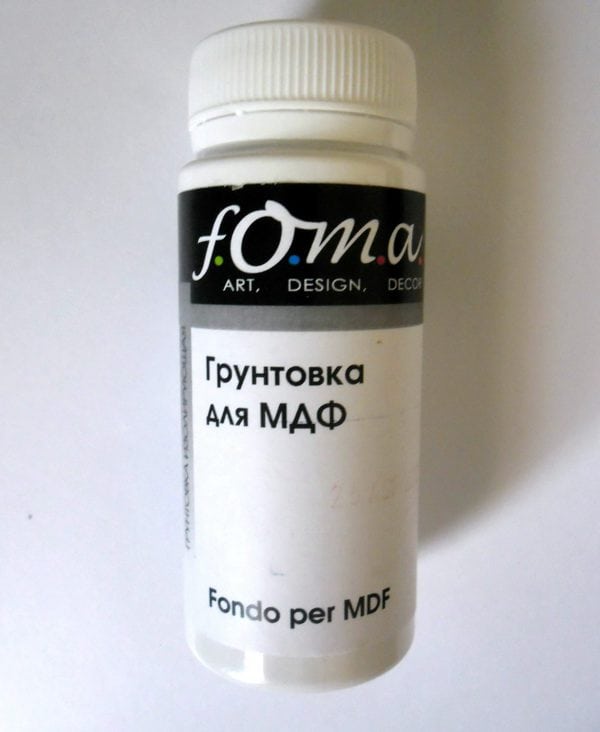MDF is a medium density fiberboard. The material is produced by dry pressing wood chips under conditions of high pressure and temperature.
- Choice of putty
- Polymer Compounds
- Epoxy compounds
- Gypsum compounds
- Cementitious compounds
- Oil and glue compositions
- Puttying
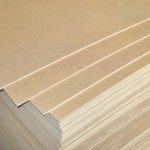
Sheet materials of any type, including MDF, need refinement. In other words, to give the material the proper level of security and aesthetic appeal, it needs to be further processed. One of the time-tested processing methods is puttying. We will deal with the nuances of this process below.
to contents ↑Choice of putty
It should be said right away that there is no special putty for MDF. For the finishing of MDF, the same putty compounds are used as for ordinary wood, as well as products from it (plywood, fiberboard, OSB, etc.). On sale there are many such fillers that differ in base material, as well as in purpose (starting or finishing mixes, for processing facades, universal mixes, etc.).
Polymer Compounds
Polymer putties are made only in the form of ready-made solutions, which are fine mixtures with a high binder content. Acrylates or latex act as a binding material.
Among all types of putties, polymeric materials are considered the most high-quality, but at the same time the least affordable because of the high cost. The reason for the popularity of polymer coatings is their numerous advantages, among which the following qualities can be distinguished:
- a high level of ductility to withstand frost and cold, temperature extremes, as well as shock loads;
- excellent moisture resistance;
- quick drying;
- thermal insulation;
- fire safety;
- ease of grinding;
- lack of tendency to shrink;
- resistance to ultraviolet;
- high adhesion;
- long service life;
- the ability to use for a variety of surfaces (facades, interior surfaces, wet rooms).
Latex putties are largely identical to acrylic, but differ in slightly stronger characteristics in terms of ductility and coating strength. Better ductility allows you to apply the material in a thinner layer, thereby saving on putty consumption. However, the main advantage of high ductility is the lack of tendency of the coating to crack.
A significant difference between acrylic and latex compositions is manifested in their colors. If acrylic fillings are always white (since they are intended for painting), then latex solutions can be tinted in any colors (for example, for natural wood). Thus, latex coatings are self-sufficient - they can not be painted.
For finishing the internal parts of the building, it is recommended to use water-based putties. The main advantage of such putties is the absence in their composition of any organic solvents that release substances harmful to humans into the air.
Companies such as Empils, Tikkurilla and Belinka are examples of manufacturers of quality polymer putty.
to contents ↑Epoxy compounds
Putties of this type are made on the basis of epoxy resin.The composition is a two-component formation, where, in addition to the resin, a hardener is included, due to which the coating sets. In this case, the manufacturer supplies both components separately. The hardener is contained in a bottle, which is poured into the putty right before applying the solution. The specific proportions of these two substances are indicated on the label.
The advantages of epoxy coatings include the following qualities:
- high ductility and coating strength;
- durability;
- excellent adhesion to other materials;
- resistance to moisture;
- immunity to ultraviolet radiation;
- ability to tolerate temperature changes.
To increase strength, polymer fiber and metal shavings are sometimes added to epoxy compositions. Such especially strong mixtures are used more often for repair than for finishing work.
Basic and finishing compositions are issued. They differ in the size of the filler fractions. Finishing compositions have small fractions, and starting compositions have large fractions. First, a starting solution with a coarse dispersion is applied. The last layer is carried out by a finely divided finishing putty.
A significant drawback of epoxy fillers is that the surfaces coated with them need continuous drying. If acrylic coatings dry in 1-3 hours, then an epoxy screed will need no less than a day. When the coating dries, it gains the necessary strength. After that, you can grind the surface.
Note! A feature of epoxy compounds is the fact that the surface does not need to be primed before applying this type of putty.
Epoxy fillers are considered a good choice for beginners. The fact is that many putties quickly set and then it is already difficult or impossible to process at all. The epoxy coating in this sense looks more advantageous, since it can be heated with a water bath to 80 degrees, and then continue puttying.
to contents ↑Gypsum compounds
Plaster-based putties are considered the best option if it is not possible to purchase a polymer composition. Moreover, in a number of indicators gypsum putty solutions even surpass polymer ones. In particular, gypsum has a higher vapor permeability, which favors the indoor microclimate. The ductility of gypsum coatings is higher than polymer. And finally, gypsum is a natural material, and therefore it is absolutely environmentally friendly. Due to the lack of shrinkage, the material does not crack. In addition, gypsum coating is easy to sand.
A significant disadvantage of gypsum is its tendency to absorb moisture. That is why gypsum coatings are created only in dry rooms. Wet air is contraindicated.
The most famous manufacturers of dry gypsum mixtures include Knauf (Satengips putty) and Bergauf (Finishgips).
to contents ↑Cementitious compounds
Cement-based putties are the undisputed leader in terms of such an indicator as water resistance. Cement tolerates temperature extremes. Most often, cement, putty compositions finish surfaces located in kitchens or bathrooms.
A significant disadvantage of cement is significant shrinkage during drying, as a result of which small cracks appear on the coating. To eliminate these defects, it is necessary to apply repeated layers of putty.
to contents ↑Oil and glue compositions
These types of fillers are rarely used for the treatment of MDF. Most often, oil and adhesive solutions are used as repair compounds when it is necessary to mask any serious defects in the material, for example, to cover a large cavity or hole.
Puttying
Before applying the putty, you should prepare the surface (remove dust, dirt, oil stains and other impurities), as well as prime the base. In this case, the primer should be designed specifically for wood. Such compositions contain special components that allow you to best process the tree. In addition, in the primers on wood there are antiseptics that prevent the development of fungus and mold.
When preparing it, it is important to pre-seal large potholes and cracks with the starting putty.
Instructions for puttying MDF:
- Knead the solution in a container (if a dry mixture is used, not a finished composition). Kneading proportions are indicated by the manufacturer on the packaging.
- Glued with fiberglass tape the seams between the sheets of MDF.
- We apply the putty with a wide spatula over fairly wide areas and use a narrow spatula to process joints and corners. The layer thickness is determined by the manufacturer of the composition. In the case of polymer putties, the maximum thickness of the layer should not exceed 3 millimeters.
- After the starting composition has dried, it is recommended that it be sanded and primed.
- After the primer dries, a topcoat is applied. When it dries, the final sanding of the coating is carried out using a fine-grained sandpaper. The final stage is the priming of MDF.
Note! You may need several starting layers before you can level the surface. Each subsequent layer can be applied only after the previous one has dried.
Puttying of MDF can only be carried out at positive temperature. Specific temperature indicators depend on the variety of composition, but most often the minimum temperature is 5-7 degrees Celsius. Also a prerequisite is normal air humidity. The moisture content of MDF should not be higher than 10-12%.
After the primer dries, you can start painting the material. So, the puttying of MDF is practically no different from the processing of drywall sheets.

